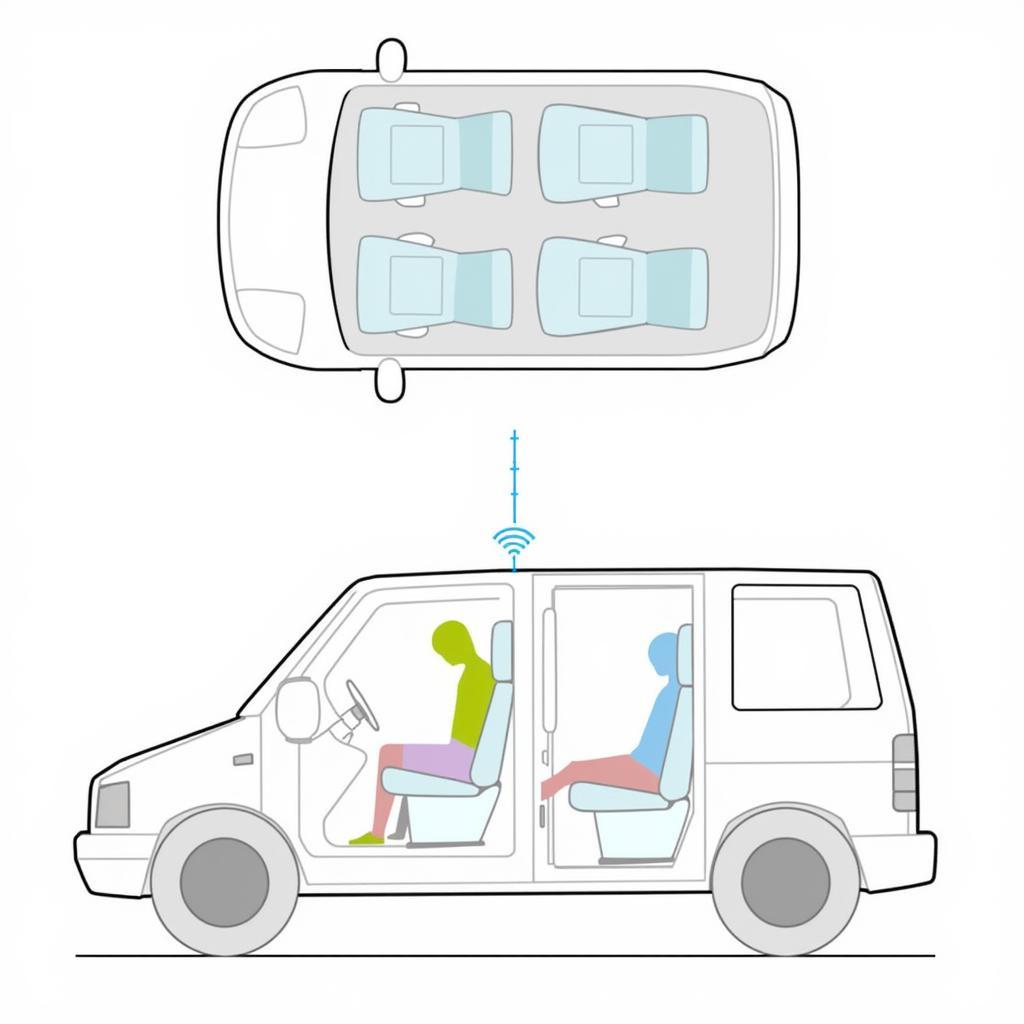Coding the adaptive headlight module on your BMW E90 can unlock a range of new features and customization options. This guide covers everything you need to know about coding this module, including how to access it, what options are available, and the tools and techniques you’ll need to get the job done.
Whether you’re looking to enable automatic headlight leveling, activate cornering lights, or even code in R8-style angel eyes, this comprehensive guide will provide you with the knowledge and insights needed to achieve your desired results.
Understanding the E90 Adaptive Headlight Module
The adaptive headlight module, also known as the “FRM” (Front Range Module), controls several key aspects of your E90’s lighting system, including:
- Headlight leveling: Automatically adjusts the headlights based on the car’s load and road conditions to ensure optimal visibility.
- Cornering lights: Activates additional lights to illuminate the corners when turning, improving visibility in tight spaces.
- Dynamic headlight control: Adjusts the headlight beam direction based on steering angle and speed, providing better illumination of the road ahead.
- Angel eye functionality: Controls the intensity and behavior of the angel eyes, allowing for customization like R8-style coding.
Coding the Adaptive Headlight Module: Essential Tools
Coding the adaptive headlight module requires specialized tools, including:
- BMW ENET cable: A specific cable designed for connecting to the E90’s network interface.
- Coding software: A software program that allows you to communicate with the vehicle’s control units and modify their parameters. Popular options include NCS Expert, INPA, and E-Sys.
- Knowledge of coding: Understanding the structure of coding data, the various parameters, and the proper coding procedures is essential for successful coding.
Steps to Code the E90 Adaptive Headlight Module
Before you begin, make sure you have a backup of your current coding data. This will allow you to restore the original settings if necessary.
1. Connect the ENET cable: Connect the ENET cable to your E90’s OBD port and to your computer.
2. Launch the coding software: Open your preferred coding software and ensure it recognizes the vehicle’s control units.
3. Access the adaptive headlight module: Navigate to the module in the coding software’s menu structure. It will usually be labeled as “FRM” or “Front Range Module.”
4. Locate the desired parameter: Identify the specific parameter you want to change. For example, if you’re looking to enable cornering lights, you’ll need to find the parameter that controls this function.
5. Modify the parameter value: Change the parameter value to enable or disable the desired feature. Refer to online resources and coding guides for specific values and settings.
6. Write changes to the module: Save the modified coding data to the adaptive headlight module.
7. Test the changes: After coding, test the new features to ensure they’re working correctly.
Expert Advice
As a professional with years of experience in coding E90 headlight modules, I can tell you that:
“The E90’s adaptive headlight module offers a wealth of coding possibilities. However, it’s essential to understand the potential risks involved, such as causing unexpected errors or damaging the vehicle’s electrical system. Always research thoroughly before coding, and proceed with caution.”
Common Coding Options and Features
Here are some of the most common coding options available for the E90 adaptive headlight module:
- Headlight leveling: Adjust the leveling range and sensitivity for optimal illumination in various driving conditions.
- Cornering lights: Enable or disable the cornering lights, which illuminate the corners when turning, improving visibility.
- Dynamic headlight control: Modify the dynamic headlight control system’s behavior, including the steering angle and speed sensitivity.
- Angel eye functionality: Code in R8-style angel eyes, adjust the intensity, and change the activation sequence.
- Other headlight features: Customize options like the headlight wash function and the headlight auto-off delay.
Tips and Recommendations
- Start with a backup: Always create a backup of your current coding data before making any changes.
- Consult coding guides: Utilize online resources and guides specific to coding the E90 adaptive headlight module.
- Proceed with caution: Coding can be complex, so proceed carefully and avoid making drastic changes without proper research.
- Test thoroughly: After coding, thoroughly test all features to ensure they are working as intended.
- Seek professional assistance: If you’re unsure about coding, consider seeking assistance from a professional automotive technician.
FAQ
Q: Can I code the E90 adaptive headlight module myself?
A: Yes, with the right tools and knowledge, you can code the adaptive headlight module yourself. However, if you’re not comfortable with coding, seeking professional assistance is always recommended.
Q: What are the risks involved in coding the adaptive headlight module?
A: Incorrect coding can lead to unexpected errors, system malfunctions, or even damage to the vehicle’s electrical system.
Q: What are some of the best resources for learning about E90 headlight module coding?
A: Online forums, coding guides, and specialized websites like bmw e90 adaptive headlight module coding offer valuable information and tutorials.
Q: What are some common coding mistakes to avoid?
A: Avoid making significant changes without proper research and always test thoroughly after coding.
Q: Can I reverse coding changes?
A: Yes, if you have a backup of your original coding data, you can restore the original settings.
Conclusion
Coding the E90 adaptive headlight module can enhance your driving experience by providing increased visibility, customization options, and a more personalized feel. With the right tools, knowledge, and caution, you can unlock the full potential of your E90’s lighting system. Remember to always back up your coding data and test thoroughly after making any changes.

